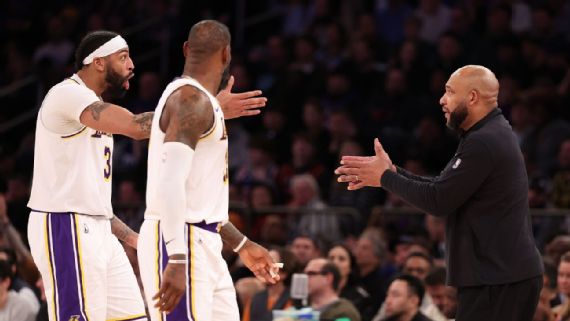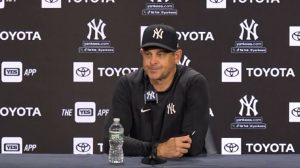
So Sad: Just Now” Hawks Best Key Man Slapped His Coach’ Has Been Issue During….
The NBA trade deadline is Thursday, and contenders are putting finishing touches on their rosters ahead of crowded postseason pushes in each conference.
But while this week is significant every year across the league, this season has presented new restrictions for front offices to navigate. This is the first trade season since the league and the National Basketball Players Association ratified the current collective bargaining agreement last spring — and it’s the final trade deadline before onerous restrictions to rein in spending go into full effect this summer.
Add the more than 20 teams still trying to reach the postseason and there are storylines to dissect up and down the standings between now and 3 p.m. ET Thursday.
Bobby, what are you focusing on as the trade deadline approaches?
Marks: It has to be teams in the second apron — or teams projected to be — next season. After Damian Lillard was traded to the Milwaukee Bucks in September, a Western Conference executive joked to me that the high spending reminded him of getting to the buffet an hour before closing time. The comment was a reaction to major moves by Milwaukee and the Boston Celtics, who acquired guard Jrue Holiday days after the Lillard deal, before a set of harsh roster and trade restrictions begin this offseason.
ESPN projects nine teams — the Bucks, Celtics, Denver Nuggets, Golden State Warriors, LA Clippers, Los Angeles Lakers, Miami Heat, Minnesota Timberwolves and Phoenix Suns as second-apron teams in 2024-25. (The Memphis Grizzlies were a projected second-apron team before they traded Steven Adams to the Houston Rockets.)
The impending rules are why the Celtics, Bucks, Suns (who landed Bradley Beal in June) and Clippers (who acquired James Harden in October) made blockbuster trades. These two deals and those of the Bucks and Celtics would not have been allowed under the new rules.
Starting with the first day of the offseason, teams over the second apron in 2023-24:
can’t take back more salary in a trade;are not allowed to aggregate contracts;are restricted from sending out cash in deals;and are restricted from using preexisting trade exceptions to acquire a player.
The Timberwolves, for example, have been active in trade discussions, according to a league source, because this is the last time they are allowed to aggregate contracts in a deal. (The same rules apply for first-apron teams, except they are allowed to aggregate contracts and can send cash in a trade.)
Teams in the first and second apron had better like their own players and also have a strong pro personnel department, a team executive told ESPN, because it will become more difficult to add from the outside — especially if teams do not control their first-round picks. (The Clippers, Bucks, Nuggets, Wolves and Suns are projected to fall into this category).
If a team finishes over the second apron after the 2024-25 season, its 2032 first-round pick is frozen and cannot be traded.
“Making a trade is not only about ownership signing off on a larger luxury tax penalty,” a team executive told ESPN, “but now [dealing with] the consequences of the first and second apron.”
Tim, how do you see the new rules impacting teams and trade targets leading up to Thursday’s deadline?
Bontemps: The league is already seeing the impact, with the reticence of teams to chase big-salary players.
Take Chicago Bulls star Zach LaVine. Before LaVine injured his right foot, ESPN’s Adrian Wojnarowski reported there wasn’t much of a market for the former All-Star, despite his status as a high-scoring wing and a potent 3-point shooter.
That’s because he is owed roughly $138 million over the next three seasons, which is the kind of expenditure for a third star that virtually guarantees that team will hit the second apron.
For teams such as the Lakers and Sacramento Kings, making a move for LaVine would have basically locked in their cores moving forward, as having three players in that salary tier makes taking on additional money extremely complicated.





